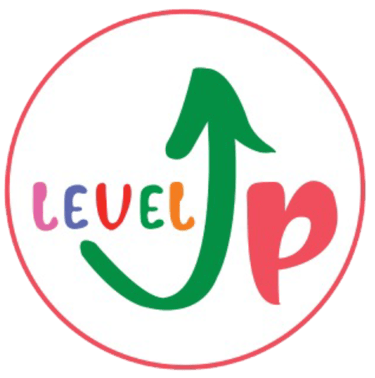Top Canva Apps for Teaching and Learning in 2025 | Canva for Teachers (K-12) & Canva Education
Discover the top Canva apps empowering classrooms in 2025. Learn how Canva for Teachers (K-12) and Canva Education transform teaching, learning, and creativity.
CANVA FOR TEACHERS
LevelUp Online Education
10/6/20254 min read


In 2025, classrooms are becoming more creative, interactive, and collaborative than ever before. One tool at the heart of this transformation is Canva for Teachers (K-12). What started as a simple design platform has now evolved into a dynamic educational hub that empowers teachers to design lessons, students to explore creativity, and schools to adopt flexible digital learning solutions. Alongside Canva Education, teachers and students now have access to a wide range of apps and features that simplify teaching, streamline assignments, and make learning more engaging.
This blog explores the top Canva apps for teaching and learning in 2025, explaining how both teachers and students can benefit from them.
1. Canva Sheets: Visual Data for Classrooms
Spreadsheets often feel boring and complicated for students, but Canva Sheets has changed that. This new feature combines the power of spreadsheets with Canva’s design magic.
For Teachers: Canva Sheets allows teachers to prepare visual grade reports, track attendance, and create charts or infographics directly from student data. Instead of plain rows and columns, the information becomes colorful, easy to interpret, and presentable in class reports or parent meetings.
For Students: Students can use Canva Sheets to turn data into visuals for science projects, history timelines, or math assignments. By integrating formulas and AI-generated charts, they learn how to present information in a creative yet structured way.
2. Magic Tools & Canva AI
AI is no longer a distant concept—it’s part of daily classroom tasks. With Canva for Teachers (K-12), the Magic Tools (like Magic Write and AI Design) help educators save hours of preparation time.
For Teachers: Magic Write can instantly generate lesson plan outlines, quiz questions, or creative story starters. AI Design can turn a simple idea into a full-fledged worksheet or poster.
For Students: Students can use these tools to brainstorm project ideas, create essay drafts, or design unique presentations. Instead of staring at a blank page, AI gives them a starting point to spark creativity.
This makes Canva Education not just a design app but also a powerful AI assistant for both teachers and learners.
3. Canva Code: Bringing Interactivity to Lessons
One of the most exciting new features is Canva Code, which allows teachers to embed interactive widgets like flashcards, quizzes, and calculators directly into their lessons.
For Teachers: Imagine preparing a math lesson where a calculator or quiz is built right into the presentation. No need to switch between platforms—everything is inside Canva.
For Students: They can interact with these embedded tools, practice concepts instantly, and even build their own interactive projects. This hands-on approach keeps students engaged and makes learning feel less like “studying” and more like exploring.
4. Polls & AI Quiz Generator
Assessments are evolving, and Canva for Teachers (K-12) now includes built-in polls and quizzes powered by AI.
For Teachers: Educators can quickly generate quizzes with the AI Quiz Generator or run live polls during a lesson to check understanding. These interactive tools make formative assessment simple and efficient.
For Students: Students enjoy quizzes that feel like games. The real-time feedback helps them know their strengths and areas to improve without the stress of traditional testing.
This feature within Canva Education ensures that learning outcomes are measurable while keeping assessments fun.
5. Interactive Learning Tools (Voiceovers & Embeds)
Sometimes, a lesson is not about text—it’s about the experience. Canva now allows teachers to add voiceovers, embed YouTube videos, or create interactive lesson pages.
For Teachers: A teacher can record a short explanation over slides, making it easier for students to revisit lessons at home. They can also embed multimedia resources to make lessons more comprehensive.
For Students: Students can submit projects with voice narration, interactive buttons, or multimedia links, which improves their digital literacy and communication skills.
This truly bridges the gap between classroom and home learning, especially in hybrid models.
6. Templates & Educational Resource Library
Canva Education offers an enormous library of templates—from worksheets to flashcards, posters, and infographics—that save teachers hours of prep time.
For Teachers: Instead of building everything from scratch, teachers can choose templates and customize them for their lessons. This reduces workload and ensures professional-looking resources every time.
For Students: Templates act as a guide for students who may not be confident in design. Whether it’s creating a science project poster or a history timeline, they have a starting point that makes work less intimidating.
7. Classroom Collaboration & Assignment Management
One of the biggest strengths of Canva for Teachers (K-12) is its classroom management tools. Teachers can assign work, track student submissions, and provide feedback directly on Canva.
For Teachers: This reduces dependency on multiple platforms like Google Docs or LMS tools because assignments, collaboration, and grading can all happen in one place.
For Students: Students can collaborate on group projects in real time, brainstorm ideas on whiteboards, and learn teamwork skills that mirror real-world digital collaboration.
This makes Canva Education a complete classroom solution rather than just a design platform.
8. Creative Canva Apps (Warp Brush, Texture & More)
Apart from teaching-focused features, Canva also provides mini creative tools like Warp Brush, Texture, and advanced image editing apps.
For Teachers: These tools allow teachers to design visually appealing classroom materials, presentations, and posters that capture attention.
For Students: Students, especially in art and design classes, can experiment with creative effects, enhancing their projects with professional-quality visuals.
This ensures creativity stays at the center of education in 2025.
Conclusion: Canva for the Future of Education
As classrooms in 2025 continue to evolve, platforms like Canva for Teachers (K-12) and Canva Education are no longer optional—they’re essential. From AI-powered tools and interactive lessons to ready-made templates and collaboration features, Canva makes teaching and learning smoother, more engaging, and more creative.
By using these top Canva apps, teachers can focus more on student growth and less on administrative tasks, while students gain the freedom to learn, create, and express themselves in new ways. In short, Canva is not just a design tool anymore—it’s a teaching and learning powerhouse for the future.
Northern Hills Supremus, A-306, opp. Northern Heights, Dahisar East, Mumbai, Maharashtra 400068
LevelUp
admissions@leveluponline.in
© 2025. All rights reserved


levelup_online_education




LevelUp Online Education









